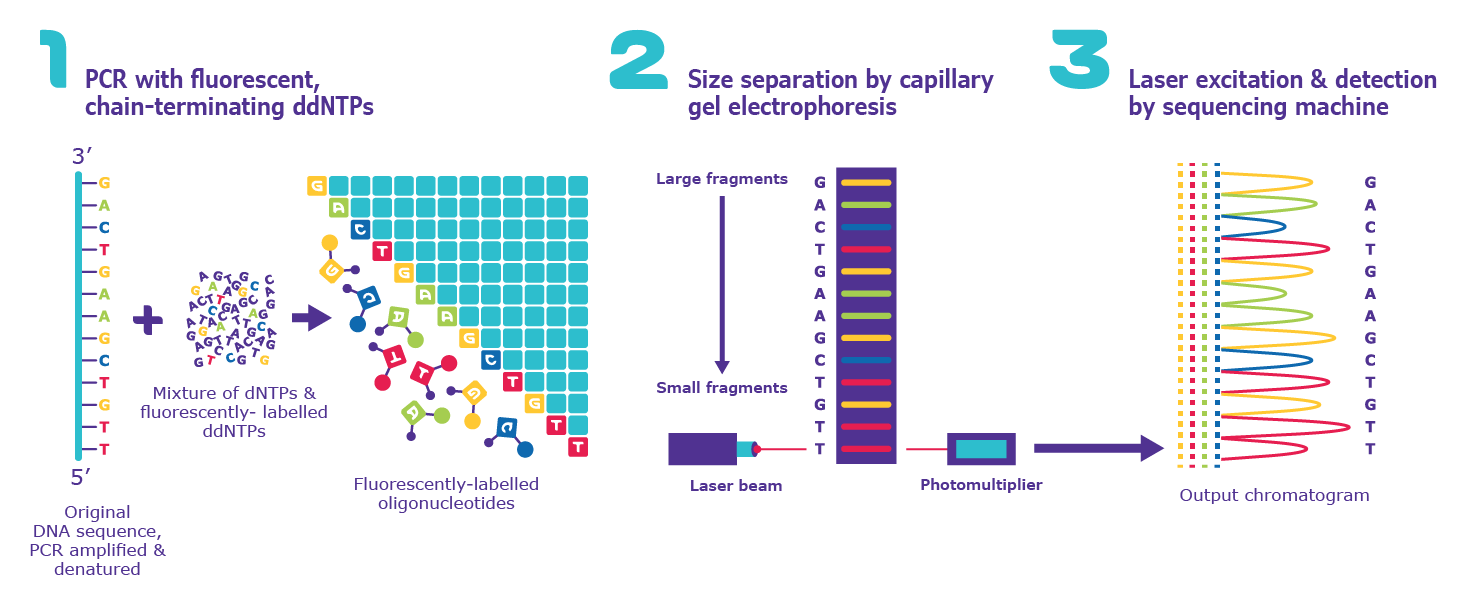


 النبات
النبات
 الحيوان
الحيوان
 الأحياء المجهرية
الأحياء المجهرية
 علم الأمراض
علم الأمراض
 التقانة الإحيائية
التقانة الإحيائية
 التقنية الحيوية المكروبية
التقنية الحيوية المكروبية
 التقنية الحياتية النانوية
التقنية الحياتية النانوية
 علم الأجنة
علم الأجنة
 الأحياء الجزيئي
الأحياء الجزيئي
 علم وظائف الأعضاء
علم وظائف الأعضاء
 الغدد
الغدد
 المضادات الحيوية
المضادات الحيوية|
Read More
Date: 2-11-2020
Date: 8-12-2015
Date: 15-12-2015
|
DNA Sequencing
The determination of the order or sequence of nucleotide bases along a length of DNA is one of the central techniques in molecular biology and has played the key role in genome mapping and sequencing projects.
Two basic techniques have been developed for efficient DNA sequencing, one based on an enzymatic method frequently termed Sanger sequencing, after its developer, and a chemical method, Maxam and Gilbert sequencing, named for the same reason. For large-scale DNA analysis, Sanger sequencing and its variants are by far the most effective methods and many commercial kits are available for its use.
However, there are certain occasions, such as the sequencing of short oligonucleotides, where the Maxam and Gilbert method is still more appropriate.
One absolute requirement for Sanger sequencing is that the DNA to be sequenced is in a single-stranded form. Traditionally this demanded that the DNA fragment of interest be cloned into the specialised bacteriophage vector M13, which is naturally single stranded. Although M13 is still widely used, the advent of the PCR has provided a rapid means to amplify a region of any genome or cDNA for which primer sequences are available and generate the corresponding nucleotide sequence. This has led to an explosion in DNA sequence information and has provided much impetus for polymorphism discovery by resequencing regions of the genome from individuals.
The Sanger method is simple and elegant and in many ways mimics the natural ability of DNA polymerase to extend a growing nucleotide chain based on an existing template. Initially the DNA to be sequenced is allowed to hybridise with an oligonucleotide primer, which is complementary to a sequence adjacent to the 3´ side of DNA within a vector such as M13 (or within an amplicon in the case of PCR). The oligonucleotide will then act as a primer for synthesis of a second strand of DNA, catalysed by DNA polymerase. Since the new strand is synthesised from its 5´ end, virtually the first DNA to be made will be complementary to the DNA to be sequenced. One of the deoxyribonucleoside triphosphates (dNTPs) which must be provided for DNA synthesis is radioactively labelled with 33P or 35S and so the newly synthesised strand will be radiolabelled.




|
|
|
|
التوتر والسرطان.. علماء يحذرون من "صلة خطيرة"
|
|
|
|
|
|
|
مرآة السيارة: مدى دقة عكسها للصورة الصحيحة
|
|
|
|
|
|
|
هيأة المساءلة والعدالة: مؤتمر ذاكرة الألم يوثّق سنوات القهر التي عاشها العراقيون إبّان الحكم الجائر
|
|
|